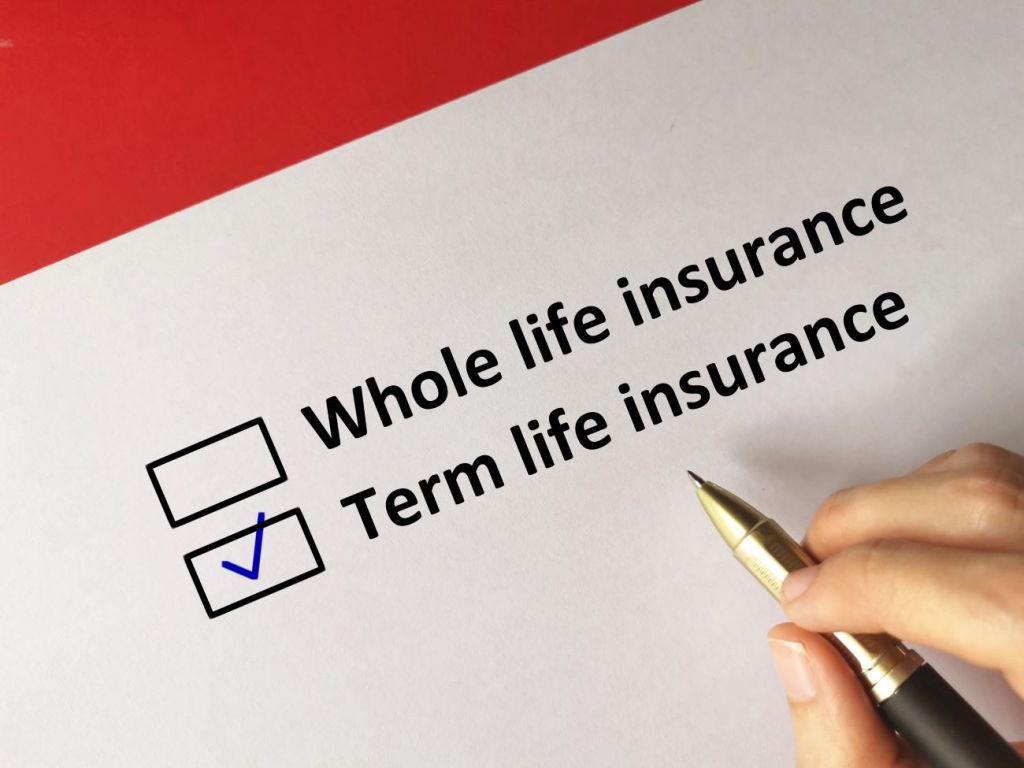Life Insurance: What Your Teen Needs to Know

Of all the things to discuss with your teen, life insurance probably isn’t at the top of the list. But while they’re still at home and (mostly) receptive to your advice, now is a good time to explain why life insurance is important. It will help your teen enter adulthood with a better grasp of this financial protection tool. Here we explain the different kinds of life insurance, how they work, the costs, the benefits, and how to find the right product for their needs.
Key takeaways
- Life insurance is a contract between you and a life insurance company: you make premium payments on a policy, then your beneficiaries receive a tax-free lump-sum payment after your death.
- Kids and teens can be added to a parent’s life insurance policy with a child term rider. Depending on the policy, kids may be able to retain this life insurance after they turn 18.
- There are two types of life insurance in Canada: term insurance and permanent (or whole life) insurance.
- Like most financial tools, the earlier, the better when it comes to buying life insurance. Increasing age and declining health impact the cost of premiums, or payments, for life insurance.
- Life insurance provides a sense of control over the inevitability of death, as well as peace of mind for loved ones.
What is life insurance?
A life insurance policy is a contract between you and a life insurance company. How life insurance works is, you, the policyholder, pay what’s called “premiums” on the policy. With life insurance, this can be regular payments, such as every month, or a single annual payment, depending on the policy. In exchange, at the time of the policyholder’s death, the insurance company pays out a tax-free lump sum of money, also called a death benefit, to the beneficiaries (the persons the policyholder has named to receive that benefit) listed on the policy.
As the policyholder, you choose your beneficiaries. When your teen is a single young adult, they may choose parents, siblings, or other family members as beneficiaries. If they have a spouse or children as they get older, their policies can be updated or changed to reflect their new phase in life.
Keep in mind that life insurance can expire, depending on the policy. This means that any money previously paid into the policy is lost to the policyholder and absorbed by the insurance company. Read the fine print to see what the policyholder’s obligations are, and what circumstances could forfeit the life insurance policy.
Read more: insurance terms and definitions and other types of insurance policies in Canada
How life insurance works
In a nutshell, when the policyholder passes away, life insurance is paid out to the beneficiaries listed on the policy. Put another way, life insurance isn’t for the policyholder, it’s for their dependants—a spouse, children, or anyone else they may support. Life insurance ensures these loved ones are cared for and can continue living their life as close as possible to the way they are used to.
(Parents/guardians: Take a moment now to check in with your teen’s emotions after explaining the details above. They may not have thought about what could happen if you weren’t around. If you think they need some time to process this, pick up the lesson another day.)
A beneficiary (or beneficiaries) can use the tax-free life insurance payout however they want. Some common expenses that life insurance can help with include:
- Funeral costs
- Everyday expenses, like bills and groceries, so the family can maintain the same standard of living
- Paying off any debt, like a mortgage, to help the family stay in their home
- Protecting a family business from financial collapse
- Covering childcare and education costs for kids
Read more about how to explain insurance to a child

Types of life insurance
Life insurance in Canada comes in two types: term life insurance and permanent life insurance. They both come with many options, depending on the amount of coverage (i.e., payout) the beneficiaries might need, how much the policyholder wants to pay in premiums, and whether there are dependants (e.g., children or elderly parents) on the policy.
Remind your teen that it’s important to choose the right policy for their needs and to reassess these needs as their families and goals change. “What life insurance should I get?” is an ever-evolving question as your teen journeys through life.
Term life insurance
This type of life insurance guarantees payment if the policyholder passes away during a specified term on the policy, usually within 10, 20, 30, or 40 years. Premiums on term life insurance are less than what you generally pay for permanent life insurance—the catch is, you may outlive the term. (Which is a good thing, right?)
There are, however, options to keep this type of life insurance ticking along past the term:
- Renewable term life insurance lets you renew the policy once the term is over.
- Convertible term life insurance means you can convert the policy into a permanent life insurance policy based on the rules of your agreement.
With term life insurance, there is also the option of joint life insurance, which insures two people—usually spouses or common-law partners.
Permanent life insurance (or whole life insurance)
This type of life insurance stays intact for a person’s lifetime and is generally more expensive (i.e., has higher premiums) than term insurance. This is because the payout, or death benefit, never expires.
Variations on permanent life insurance include term-to-100 life insurance, a hybrid of term and permanent insurance that works like a term policy, but covers you for life (the “100” refers to the age after which the death benefit is either paid out early, or at which point the policyholder stops paying premiums, but retains coverage).
Another form of permanent life insurance is called universal life insurance. It provides lifetime coverage and builds up what’s called a cash surrender value, or CSV. This is not to be confused with the cash value of the policy. The CSV is the sum of all the payments made into the policy, minus any administrative fees and penalties should you withdraw the policy early—the “surrender value.” As long as it’s held inside the insurance policy, the CSV can be invested, and the returns on this investment can be used to reduce the insurance policy’s premiums or added back into the cash value as interest. There is also something called universal life insurance, which lets you decide how to invest the CSV.
Why buy life insurance?
Different life events and circumstances—such as marriage or partnership, buying a home, and having kids—are common reasons people buy life insurance to protect their loved ones. But these aren’t the only scenarios. Here are a few other situations and events your teens should be aware of that make life insurance a valuable financial tool:
Owning a business
If your enterprising teen ends up running their own business, a solid life insurance policy can help their loved ones avoid financial instability and possible bankruptcy.
Debt
No one wants their loved ones saddled with debt after they pass away, and a solid life insurance policy could help lift the debt burden for family members. (This isn’t to say life insurance is the answer to debt—far from it—but it’s an option to help ease financial stress for families.)
Read more: Types of debt and their meaning
A high-risk job
If your teen becomes an astronaut, for example, they’d have a greater risk of death on the job than an accountant. Premiums will be higher for people considered working in high-risk jobs, but life insurance would help cushion the family in the event of a loss.

High-risk hobbies
Similarly, if extreme sports or hobbies, like scuba diving or motocross, are your kid’s jam (instead of reading and knitting, for example), they would pay higher premiums on a life insurance policy. But again, it would cover their families in the event of an accident.
Supporting your parents
As unpleasant as it is to think about, your teen may end up taking care of you or your spouse in your advanced years. If they’re acting as a caregiver for you or their in-laws, and they pass away, life insurance can help protect aging parents, too.
At what age should you buy life insurance?
Generally, the earlier you purchase life insurance while young and healthy, the more affordable it is. When age and illness creep in, not only do premiums go up, but also a person’s ability to qualify for life insurance goes down.
Parents can purchase life insurance for their kids from a few days after birth right up to age 18. A permanent life insurance policy can be transferred to your child when they turn 18, so they can continue the coverage or cash out (see below).
Can kids get life insurance?
Kids can’t get their own policies, but parents or guardians can easily get life insurance on their behalf. Why get life insurance for kids? Should the absolute worst happen to a child, a policy would help cover funeral and burial costs. And, depending on the fine print, life insurance may also cover your time away from work to help parents or guardians grieve the loss.
Fortunately, you don’t need to get a separate policy for kids: You can add a child, stepchild, or legally adopted child to an existing policy with a “child term rider.” A “rider” is one of many optional benefits that can be tacked on to an existing life insurance policy.
Life insurance for kids has other upsides:
- Premiums are low because kids are young and usually in good health.
- If your kids keep this same insurance policy into adulthood, they’ll be insured for the long term. In other words, even if they end up with an illness or disability as an adult, they will still have a great insurance policy.
- A permanent life insurance policy with a cash value will accumulate over the years. Your teen could cash out this policy and put the money toward a house down payment, for instance, when starting their own family.
How much does life insurance cost?
Many people assume the monthly cost of a life insurance policy, or the premium, will have a big impact on their budget. The reality is, some policies start at fewer than $13 a month—about the cost of a streaming service—ranging up to about $100 per month in Canada. That being said, policies are not one-price-fits-all; different factors influence the cost of premiums, including age, gender, your general health and medical history, whether you smoke, and your lifestyle (remember our hobby examples above: motocross versus knitting).
If your older teen wants to know more about budgeting for a life insurance policy, get them to think about how much life insurance they might need: Do they have any outstanding debt, such as student loans? Do they have a partner or even a pet they want looked after if they passed away? As they get older and potentially support their own family, they should think about how much their family members would need to be comfortable after they pass. With those numbers in mind, they can look at how much they might pay for coverage, then decide what they can afford.
There are many online life insurance calculators out there, but here’s a quick way to figure out how much life insurance you may want:
(Any debt owing) + (annual income x number of years you want to provide for your family) + (mortgage owing) + (kids’ education cost) = life insurance policy amount
Here’s an example of a single person with two young kids:
($5,000 in debt) + ($50,000 income x 10 years) + ($500,000 mortgage) + ($50,000 x 2 kids)
= $5,000 + $500,000 + $500,000 + $100,000
= $1,105,000 policy amount (or payout amount)
In this example, this person could opt for more affordable term life insurance for 10 years, since that’s the length of time they want their kids fully supported. Or, universal life insurance could build up a CSV. This person could withdraw later on for a home renovation, for instance, and still retain the life insurance policy.

Why your kids should understand how life insurance works
If your kids are comfortable talking about life insurance, they will be better prepared when the time comes to purchase life insurance for themselves. Rates go up as we get older and—spoiler alert—we’re all getting older. Unfortunately, many people don’t even think about life insurance until later in life, but the best time to buy it is as young as possible, whether that’s as a child term rider on a parent’s policy or a basic policy for someone 18 or older. Age and health impact everyone eventually, so encourage your kids to seize those years when youth feels endless and their health is in great shape!
That being said, be mindful when you talk to your kids about life insurance, especially younger tweens, so you don’t cause anxiety. But do talk to them—understanding how life insurance works helps kids understand that they’re financially protected when their parents are no longer around. Understanding how life insurance works also helps them recognize why they should buy their own life insurance as soon as possible. Knowing how to mitigate some of the financial losses that come along with life events, like death, will give your kids a sense of control and peace of mind.
One thing is certain: No one is here forever. But we can plan for the inevitable to relieve financial stress for our loved ones when it matters most. To help your kids start thinking about their own financial futures, there’s the Mydoh app, which gives teens the real-world experience of making their own money, spending it, and saving it responsibly.
Download Mydoh and help build the foundation of financial literacy for your kids and teenagers.
This article offers general information only and is not intended as legal, financial or other professional advice. A professional advisor should be consulted regarding your specific situation. While the information presented is believed to be factual and current, its accuracy is not guaranteed and it should not be regarded as a complete analysis of the subjects discussed. All expressions of opinion reflect the judgment of the author(s) as of the date of publication and are subject to change. No endorsement of any third parties or their advice, opinions, information, products or services is expressly given or implied by Royal Bank of Canada or its affiliates.





